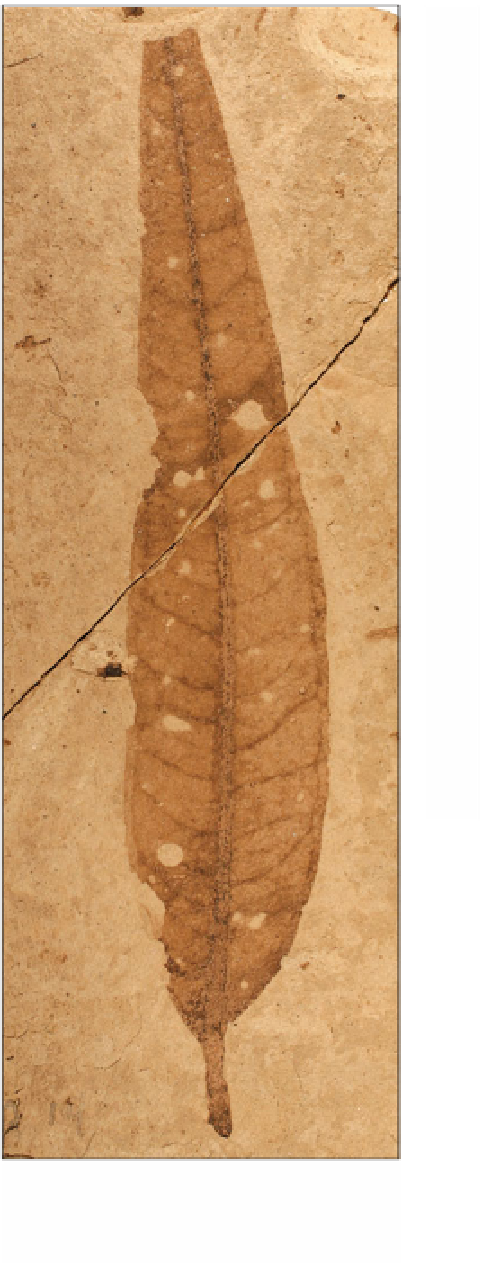Geoscience Reference
In-Depth Information
248
comparison of Florissant plants with
their nearest living relatives, MacGinitie
(1953) came up with a mean annual
temperature of 16-18°C (61-64°F), while
the physiognomic method produced a
cooler climate of 11-13°C (52-55°F)
(Wolfe, 1994; Gregory and McIntosh,
1996). Today it is about 4°C (39°F)! We
know from growth rings and laminated
shales that the climate was seasonal, so
overall it is most likely to have been a
seasonal warm temperate climate, perhaps
similar to that found in the Sierra Madre
ranges of north-central Mexico today
(Meyer, 2003). A number of different
methods which incorporated lapse rate
(the rates at which temperature decreases
with height) have produced evidence for
paleoelevation of the Florissant area in
the Eocene (Meyer, 2001). While each
method produced different figures, due to
different assumptions and calculation
methods, they did show that earlier esti-
mates by MacGinitie (1953) of 300-900 m
(1000-3000 ft) were much too low, and
the real height was more likely to have
been in the 2000-4000 m (6500-13,000 ft)
range. The modern elevation at Florissant
is 2500-2600 m (8000-8500 ft).
At Florissant, some of the vegetation
would have lived in or around the lake,
e.g. water lilies, cat-tails, and pondweed.
The climate suggested that the hilltops
would have been too dry to support lush
forest, which would have been confined to
the valley bottoms (riparian). The valley
floors would have seen
Fagopsis
,
Cedrelospermum
,
Populus
,
Salix
,
Sequoia
, and
Chamaecyparis
. Higher up
the slopes shrubs would dominate,
together with trees of drier habitats such
as
Pinus
and
Quercus
. Many of the insects
were associated with water in their habits,
e.g. with aquatic larvae or feeding
methods (e.g. water striders). Others were
strongly linked to the vegetation, e.g.
nectar feeders, bark borers. Indeed, some
fossils show evidence of direct
relationships between plants and insects
in the form of trace fossils of leaf-miners,
galls, and leaf-cutting bee activity (
248
).
248 Leaf of Eugeniawith holes possibly
caused by insect larvae NHM. Length
11.7 mm 0.4 in.



Search WWH ::

Custom Search